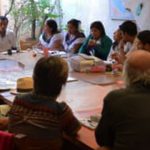How women are breaking the cycle of violence, insecurity and poverty
Gender equality is the focal point for human progression. This is clear from the UN Sustainable Development Goals, the “Project Drawdown” research on climate change led by Paul Hawken, and NGOs and think tanks from Human Rights Watch to the Council on Foreign Relations, among others. Their research shows that out of 130 million children who are out of school, 70% of them are girls.1 Investing in infrastructure to make education accessible for girls propels them out of poverty and initiates a snowball effect that reduces inequalities, health, population stress, economic growth, climate change, and the protection of the environment.
Nearly 70,000 women die each year from unsafe abortions, with five million continuing to suffer long-term effects5. In fact, the WHO estimates that nearly 20 million unsafe abortions occur every single year5. We are also seeing a rise and return of the Global Gag Rule, which by cutting funding — impedes [crucial] resources and access to safe abortions.
The common thread here is that women need and deserve full access to health careand education as part of their fundamental human rights. There should be no impediments to any women seeking care, medical advice or education regardless of race, language, religion or socio-economic background. When women and girls are educated and healthy, communities flourish: they are more productive, smarter and stronger. This is the message we should all celebrate and champion on International Women’s Day.
To read full article please visit this page



